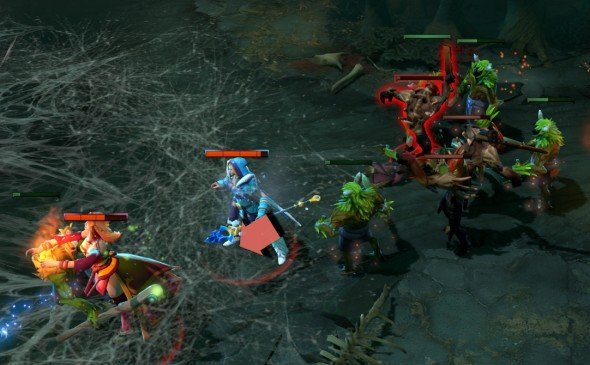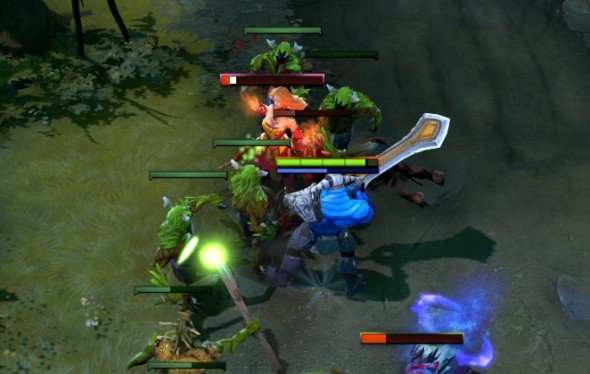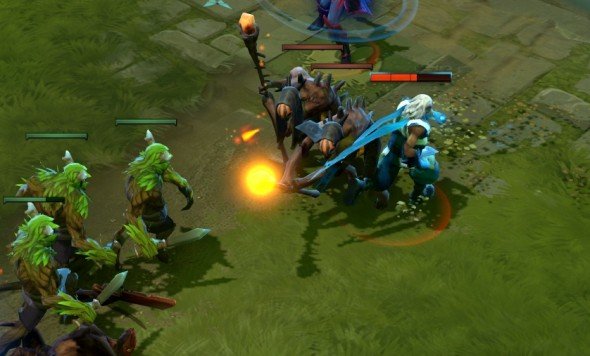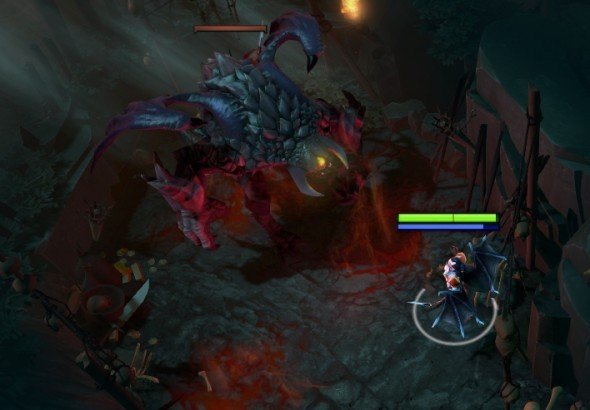DOTA 2 preview

As well as adding better matchmaking, Valve plan to incentivise the community to address this problem themselves. “We want a build a structure where the community can self-police things like that,” says Erik. “We're right in the middle of generating all the data on how that's working, and we'll see how that goes. We think it's a solvable problem.
“[Putting] a new player into a position where they can have a bunch of fun learning the game is something that's important to us. And we have loads of ideas of how to do that. Some of them rely on people having friends that are playing already, so they can coach them or teach them the game within the product, and we think that's one way to do it. There's a way that we can put the new player into a really safe place. There are bots that they can play against to learn the game that way. And there's matchmaking: we want new players to be learning at the same pace as other players.
“How does the community interact with each other so that everyone stays civil? We're kind of testing that out now, where players have the ability to report other players in the game for a variety of things that they're doing, good or bad.”
Understanding the game is important, but getting good at it doesn't have to be. “We don't want Dota 2 players to have this goal of moving up in skill as much as they can,” Erik explains. “The goal of DotA is to have really entertaining matches.”

The current build of Dota 2 does little to explain itself, but it's still a game you want to get into, simply because it's gorgeous. The battlefield is shaded in pastels, lush grass and grey rock painted with the same low-contrast palette. The heroes are big, colourful, diverse characters with sharp outlines and distinctive shapes. There are already 63 to choose from, so being able to tell them apart is understandably a priority. Adding new ones is one of the main ways DotA games typically evolve after release.
“There's a really strong functional component to why the game looks the way it does, because DotA is a game where you're looking at your own hero the entire time, which is different from all the firstperson shooters,” Erik says. “So we wanted to make the thing that you're looking at interesting – something you want to spend 45 minutes looking at, thinking it looks cool.”
“On the functional side, when things happen in Dota 2... in the span of five seconds you could have 20 different elements on the screen, of varying importance. And we need to be able to have players understand what's going on and be able to visually break down what's happening at any given moment.”
The biggest gaming news, reviews and hardware deals
Keep up to date with the most important stories and the best deals, as picked by the PC Gamer team.
It's set in the same world as DotA 1, which gave new names, abilities and backstories to characters that used Blizzard's Warcraft III art. It wasn't a fully realised fiction, so Valve have been fleshing it out with comics and new histories for each hero.

“This is the first fantasy game that we've made at Valve,” Erik says, “which I'm sure a lot of the artists on the team are really excited about... so we wanted to have at least a fresh take on fantasy.”
“We didn't want to do the typical Northern European fantasy look to the game. While there are elements of that type of fantasy that we think are interesting, we want to pull from sources from all around the world and try to make those all fit together. So there are elements of Eastern fantasy in the game, and South American fantasy, and all different parts of the world – DotA is a very international product.”
While a lot of Dota 2's hero characters look fresh, it's not hard to tell which Warcraft III characters some of them were originally based on. Pudge, for example, is a fat, stitched-up zombie recognisably similar to the Abomination – and sure enough, he used that very model in DotA. The Dota 2 version has the same concept, shape, and the same two weapons in the same two hands. Even if it were an unrelated game, parities like this would be suspicious. When you can also trace such a clear causal line from Blizzard's art to what has ended up in Valve's game, it just seems wrong.
Blizzard are working on their own version of DotA, featuring a motley crew of characters from all their major games, from Siege Tanks to Orcs. Both games will inevitably be compared with League of Legends, the hugely successful free-to-play DotA game from Riot. But Erik says Valve don't see it as a direct competition. “My impression of the League of Legends community is that they're very happy and they're big fans of Riot, the developer that's delivering the value to them. Like all games, their fans are extremely attached to that product.”

It is also a rare example of free-to-play done right: players can pay for access to new heroes, but these need to be balanced for the game to work in the first place so they're not getting an outright advantage.
Valve say they haven't even decided how Dota 2 will make money. “The hard thing with any game is how to build a product so a bunch of people out there want to spend their very limited entertainment time playing it,” Erik explains. “Once you have that, figuring out how to provide value and generate revenue is easier.”
Right now, Dota 2 is still a hard game to get into if you're not an experienced DotA player, but it's a beautiful rendition of it for those who are. It'll be interesting to see if Valve can figure out how to make it accessible and appealing to new players. It's a complex, tactical game, but they're among the best in the industry at making the tricky seem intuitive.

